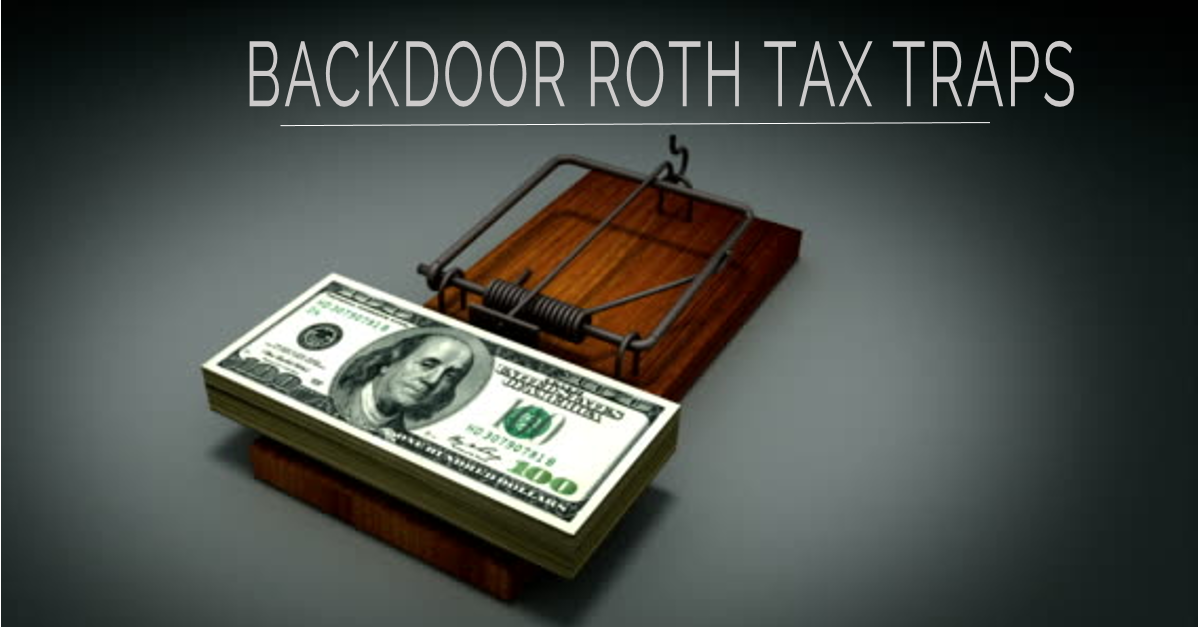Backdoor Roth IRA Conversion: Beware of Tax Traps and Pitfalls
For high earners seeking tax-advantaged retirement savings, the backdoor Roth IRA presents a compelling opportunity. This strategy allows individuals exceeding the income limits who are unable to directly make Roth IRA contributions but still harness the benefits of tax-free growth and withdrawals in retirement. By contributing to a traditional IRA and subsequently converting it to a Roth IRA, this “backdoor” approach opens a pathway to potentially significant tax savings in the long run. However, while the appeal is undeniable, it’s crucial to navigate this strategy’s intricacies and potential drawbacks before making a decision.
What is a Backdoor Roth IRA?
A backdoor Roth IRA conversion isn’t a separate type of IRA but rather a strategic maneuver that allows high earners, who typically exceed the income limits for direct contributions, to reap the benefits of a Roth IRA. This involves contributing to a traditional IRA with after-tax contributions (meaning you’ve already paid income taxes on the money or if you are ineligible for tax deduction) and then converting those funds into a Roth IRA. While the contributions are not tax-deductible, the subsequent growth and eventual withdrawals from the Roth IRA can be tax-free, making it an attractive option for those seeking long-term tax advantages in retirement.
Knowledge is Confidence!
Pitfall #1: Unexpected Tax Bills
The biggest misconception is that making a backdoor Roth conversion is always tax-free. This is only true if you have no pre-tax money in existing traditional IRAs. The IRS’s pro-rata rule means your conversion could trigger taxes if you have other IRAs.
- IRA Aggregation Rule: The IRS treats all your IRAs as one account, taxing a portion of your conversion based on the percentage of pre-tax money in your total IRA holdings. It doesn’t matter if you have multiple pre-tax IRAs across different companies. It is all viewed as one IRA.
- Types of Pre-Tax IRAs:
- Traditional IRA
- Rollover IRA
- SEP IRA & SARSEP IRAs
- SIMPLE IRA
- Example: You have an existing Traditional IRA account with a balance of $14,000 at Investment Firm A. The funds came from an old 401k you previously worked. Your income is too high to contribute directly to a Roth IRA, so you are using the backdoor strategy at Investment Firm B. You contributed $7,000 to a traditional IRA and immediately converted the funds to a Roth IRA. Because of the account aggregation rule, the IRS views you as having one traditional IRA with a balance of $21,000. $14,000 is pre-tax (in the rollover IRA), and $7,000 is after-tax (in the new IRA). When you convert the $7,000, it applies the pro-rata rule based on the percentage between the after-tax amount and the total balance. In this case ($7,000 / $21,000 = 33.33%. So $33.33% of the $7,000 conversion is tax-free, and 66.67% (or $4,666.67) is taxable.
Pitfall #2: The Five-Year Rule
The five-year rule on Roth IRA conversions is crucial for those considering the backdoor strategy. It stipulates that any earnings withdrawn from a converted Roth IRA within five years of the conversion are subject to taxes and a potential 10% early withdrawal penalty if you’re under 59 ½ years old. This five-year period begins on January 1st of the year you converted, regardless of the specific date. Notably, each converted Roth IRA has its independent five-year clock. However, contributions (not earnings) to the Roth IRA can be withdrawn tax-free and penalty-free at any time.
You can learn more about the various Roth 5-Year Rules from: Roth IRA 5-Year Rules on Withdrawals and Conversions
Pitfall #3: Impact on Social Security & Medicare Tax Trap
Conversions can increase your taxable income and tax bracket, affecting your Social Security benefits and Medicare premiums. As your income increases, so does the percentage of Social Security taxable by the federal government. In 2024, up to 85% of your social security benefit is taxable if your single income is over $34,000 ($44,000 if married filing jointly).
Medicare Premium is also determined by your income. However, the impact will be felt two years later. That is because your current year’s Medicare premium is determined by your modified adjusted gross income from 2 years ago.
Pitfall #4: Future Tax Rates
The decision to pursue a Roth IRA conversion often hinges on your current tax rate compared to your anticipated future tax rate. If you believe your future tax rate in retirement will be higher than your present rate, converting to a Roth IRA now could be a strategic move. By paying taxes on the converted amount at your current rate, you essentially “lock in” that tax rate and potentially avoid higher taxes on withdrawals in the future. However, predicting future tax rates is inherently uncertain. It’s essential to consider various factors like potential changes in tax laws, your income level in retirement, and overall economic conditions before making a decision based solely on tax rate projections.
For federal employees or other employees with a pension, it is unlikely that you will be at a lower tax rate in retirement. With pension + Social Security, most retirees’ income will be above the lowest two brackets. Moreover, with the Tax Cuts and Jobs Act still in place until 2026, reviewing your current income bracket and taking advantage of conversions now would make sense.
Backdoor Roth IRA Tax Form
There isn’t a specific form to file a backdoor Roth IRA. It is two separate steps. First, you will need to file Form 8606: Nondeductible IRAs to let the IRS know that your Traditional IRA contribution is not tax deductible. Then, after you complete the backdoor Roth conversion, the investment firm will send you a 1099 to notify the IRS that the funds left the Traditional IRA for a Roth IRA. Consult a tax professional to assist you and answer additional questions.
The Mega Backdoor Roth Conversion
A mega backdoor Roth IRA strategy is a little-known secret allowing you to save $73,500 ($66,000 if under 50) into a Roth account annually. The mega Roth is primarily used by people with high incomes who cannot contribute to a Roth IRA account due to income limitations. To learn more about it, check out this article: The Mega Roth – $73,500/Year Into a Roth IRA
The Bottom Line
While the backdoor Roth IRA can be a valuable tool, it’s essential to be aware of the potential pitfalls. It’s highly recommended that you consult a tax professional or financial advisor before proceeding to ensure this strategy aligns with your individual financial goals and circumstances.
Key Takeaways:
- Backdoor Roth IRAs can trigger unexpected taxes due to the account aggregation rule
- Withdrawals before five years can incur penalties on gains.
- Taxable conversions could affect Social Security and Medicare benefits.
- Future tax rates are uncertain, making the decision more complex.
Reach Out to Us!
If you have additional federal benefit questions, contact our team of CERTIFIED FINANCIAL PLANNER™ (CFP®), Chartered Federal Employee Benefits Consultants (ChFEBC℠), and Accredited Investment Fiduciary (AIF®) professionals. At PlanWell, we are federal employee financial advisors with a focus on retirement planning. Learn more about our process designed for the career fed.
Preparing for federal retirement? Check out our scheduled federal retirement workshops. Sign up for our no-cost federal retirement webinars through our Federal Retirement Webinar page. Make sure to plan ahead and reserve your seat for our FERS webinar, held every three weeks. Want to have PlanWell host a federal retirement seminar for your agency? Reach out, and we’ll collaborate with HR to arrange an on-site FERS seminar.
Want to fast-track your federal retirement plan? Skip the FERS webinar and start a one-on-one conversation with a ChFEBC today. You can schedule a one-on-one meeting through our Contact page.










